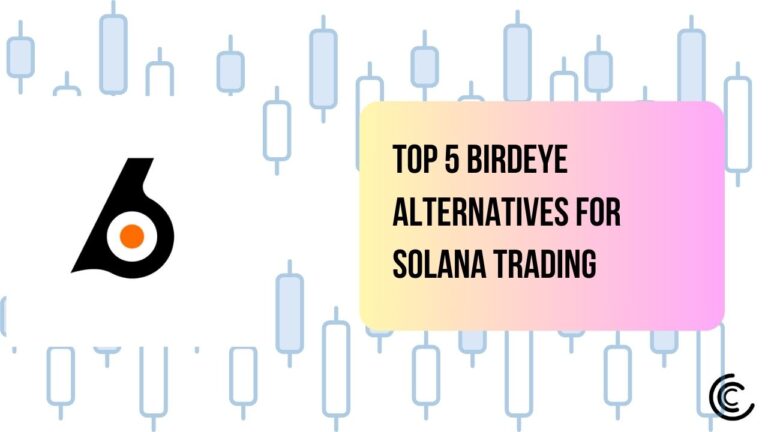Ethereum’s recent Pectra upgrade marks a pivotal step forward for the ecosystem – especially with the introduction of native account abstraction via EIP-7702. At WhiteBIT, we’ve been preparing for this shift long before deployment. Here’s how we approached implementation, and what the upgrade means for the broader industry.
Table of Contents
What does the Pectra upgrade mean for the industry?
The Pectra upgrade has unlocked new possibilities and redefined how Ethereum can be used – especially through EIP-7702.
Account abstraction, which had long been proposed, debated, and implemented through workarounds, is now available natively.
EIP‑7702 enables any existing EOA (externally owned account) to temporarily act as a smart contract – with the owner’s explicit permission. This EOA references a chosen smart contract instead of storing bytecode itself. The mechanism is similar to proxy contracts and is extremely efficient in terms of storage and delegation costs.
The implementation is highly flexible:
- As the delegation happens before the actual transaction execution, an EOA can become a delegator and act as a contract in the same transaction;
- The delegation can be limited to a single transaction;
- In some cases, the same user signature (from an EOA) can be reused to delegate execution to the same contract address across multiple EIP‑7702-compatible networks (e.g. Optimism). This makes cross-chain interactions more seamless, which is convenient for users.
This opens a broad range of use cases for developers, auditors, and AML providers – but also requires them to account for new edge cases that are still emerging.
The industry has yet to fully explore EIP-7702, but its potential is as significant as its scale.
What has changed for WhiteBIT users with the upgrade
This change does not affect user experience or how users interact with the blockchain. Everything stays the same from the user’s perspective, with one exception:
ETH deposits now consume slightly more than 21,000 gas because a smart contract call is invoked.
The gas difference is negligible – 21,041 vs. 21,000, as shown in this example transaction.
How did we prepare
EIP‑7702 enabled a new way to consolidate user funds. The standard ERC‑20 consolidation flow previously involved:
- Sending ETH to the user’s address to pay gas;
- Transferring tokens from that address to a unified platform address;
- Returning remaining ETH back to the platform.
This meant three separate transactions per consolidation – costly and inefficient.
Batch-sending ETH to multiple addresses helps a bit, but doesn’t eliminate the final two steps.
A common workaround was to deploy a smart contract factory and assign users precomputed addresses. This reduced the transaction count and allowed batch processing, but came with trade-offs:
- Some EVM-like chains (e.g. Dymension) don’t allow contract creation;
- Others (e.g. Ronin) do not support CREATE2;
- Some (e.g. zkSync) use different address derivation algorithms.
This can lead to unsafe behavior if users accidentally send funds on a network where the factory won’t function – and it fragments user experience across chains.
EIP‑7702 allows the same flow with native EOAs.
We had been tracking this proposal from the beginning. When the mechanism was finalized and deployed on Sepolia, it worked even better than expected. We began integration immediately.
We learned to send new transaction types, implemented delegations, tested edge cases, and wrote smart contracts with minimal logic.
We prioritized safety – preventing unauthorized access and incorrect parameters – and submitted the contracts for audit right after testing. The audit passed successfully.
WhiteBIT has the highest number of smart account authorizations. What is the reason behind it
We had been looking forward to the hard fork – it has been delayed several times. On May 7, after successful activation, we executed our first delegation. Everything worked as expected, so we started to use EIP-7702 flow for transferring funds from all addresses we own.
As a result, we reduced operational costs by more than 3x (at the moment of writing).
Delegate contracts in practice
Some external analysts, including The Block, suggested that delegate contracts may be used to support batch transactions, gas sponsorship, or simplified on-chain flows. In practice, that’s mostly accurate – though with a few important nuances.
- Streamlined onboarding – no, the user experience remains unchanged.
- Gas sponsorship – effectively yes: we process transactions from the user’s address while covering gas from a hot wallet; supported operations in the delegate contract are intentionally limited for safety and simplicity.
- Managing interactions – yes, if the interaction refers to user deposits.
- Batch transactions – absolutely.
What are the risks and safety precautions when working with EOAs that temporarily become contracts?
The biggest risk is delegating your EOA to a malicious or vulnerable contract – whether by inattention, phishing, or scam.
Attackers could gain control of user funds. Even though delegation can be revoked, you may not act fast enough.
We recommend using only audited and trusted solutions.
What’s next
While EIP‑7702 brings significant improvements on the infrastructure side, we chose to focus on what delivered the most practical value – internal optimizations for gas efficiency and security. There was no need to modify user-facing processes such as withdrawals, which remain unchanged. As for broader adoption, we believe that meaningful integration should happen behind the scenes, without adding complexity for users. We’re continuing to monitor how the ecosystem adopts account abstraction and are ready to extend our use of it as new tools and standards emerge.
Conclusion
The Pectra upgrade – and especially EIP-7702 – signals a shift in how Ethereum applications and platforms can interact with users at the protocol level. For WhiteBIT, it provided a rare opportunity to reduce costs, improve scalability, and experiment with smart account logic without disrupting the user experience. As adoption grows and new use cases appear, we see native account abstraction not just as a technical enhancement – but as a foundation for a more flexible, efficient, and user-friendly Web3 ecosystem.
Written by – WhiteBit Tech Team










